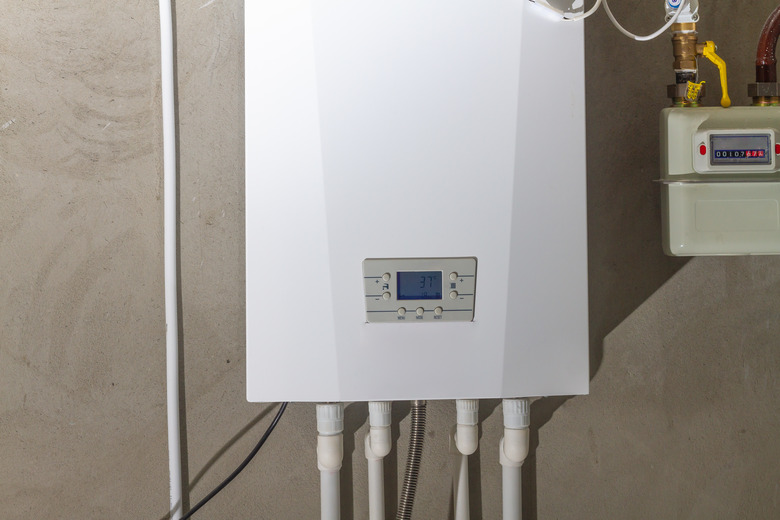How Does A Thermocouple Work In A Boiler?
We may receive a commission on purchases made from links.
Boilers aren't water heaters, but they are similar, and when it comes to maintaining water at a steady temperature, they work in the same way. The main difference between a boiler system and a water heater is that a boiler is part of a closed loop. It's usually supplying hot water or steam for a baseboard-radiant or underfloor heat system. Unlike a water heater, which gets refilled by cold water whenever you use hot water, a boiler circulates the same water again and again, reheating it as needed to keep it at the temperature needed to keep your house warm.
Gas boilers, like gas water heaters, need to cycle on and off to maintain a constant temperature. To this end, many of them have a standing pilot light, and where there's a pilot, there's always a thermocouple. The function of a boiler thermocouple is the same as that of a water heater or furnace thermocouple, and it's a simple but important one. It tells the gas valve to stay open when the pilot is lit.
Tip
The main function of a boiler thermocouple is to shut off the gas valve if the pilot light goes out.
A Boiler Thermocouple Is a Safety Device
A Boiler Thermocouple Is a Safety Device
Like a water heater or room heater thermocouple, a boiler thermocouple's main function is to shut off the gas valve when the pilot goes out. If the thermocouple wasn't there, and the gas valve stayed open, unburnt gas would collect around the burner assembly and eventually waft into the room, creating a fire and explosion hazard.
You only find thermocouples on appliances with standing pilots. Many manufacturers have replaced standing pilots with electronic ignitions that ignite the gas whenever the valve opens. Appliances with these spark ignitors do not need a thermocouple.
The Principle Behind Thermocouples
The Principle Behind Thermocouples
A thermocouple is basically a temperature-sensing device that is able to generate a small voltage. It can do this because of the Seebeck effect, discovered in 1821 by physicist Thomas Johann Seebeck. He found that two dissimilar metal wires generated a voltage between them when they were joined at one end and that end was heated to a significantly higher temperature than the other end.
The wires in a boiler thermocouple are usually alloys of nickel and chromium and nickel and aluminum. The fused end is positioned inside or just above the pilot flame, and the other ends of the wires are attached to a voltage sensor that operates the gas valve. When the pilot is on and the voltage between the wires increases, a small current flows through the valve, signaling the valve control to stay open. This current stops when the pilot goes out, and the valve closes.
Troubleshooting a Thermocouple
Troubleshooting a Thermocouple
Whenever you start a standing pilot, you have to manually depress the gas valve for 10 to 20 seconds to give the thermocouple time to heat up and start generating enough current to keep the gas valve open. If the pilot won't stay lit no matter how long you depress the gas control, the thermocouple could be worn out.
You can test one by disconnecting it from the gas valve and measuring the voltage between the conductors. You should get a reading of around 40 millivolts when the pilot flame is on. A reading of less than 25 millivolts indicates that the thermocouple is bad and needs to be replaced.
Before you conduct this test, check the pilot flame. It should be about an inch high and mostly blue. If it's small and primarily yellow, clean the pilot tube and try starting the appliance again. You should also check the position of the thermocouple probe. It should be directly over the flame. If it has moved for some reason, reposition it.
